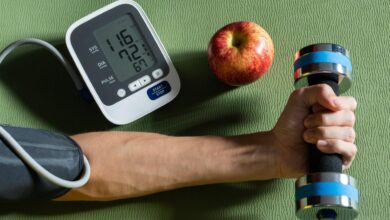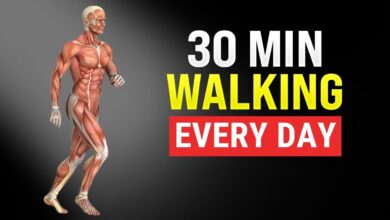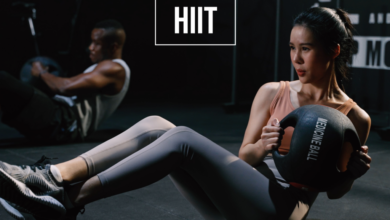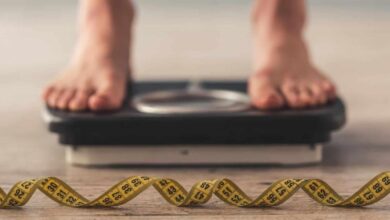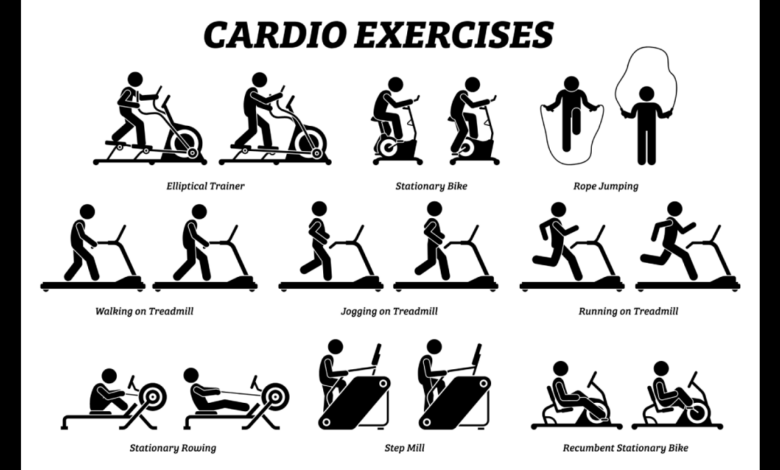
This Is The Best Cardio For Fat Loss
This is the best form of cardio for fat loss, and it’s not what you think. Forget the endless hours on the treadmill or the monotony of the elliptical. The key to shedding pounds and sculpting your physique lies in a powerful form of exercise known as High-Intensity Interval Training (HIIT).
HIIT is all about short bursts of intense effort followed by brief recovery periods. This dynamic approach not only burns calories during your workout but also revs up your metabolism for hours afterward, leading to significant fat loss.
Types of Cardio for Fat Loss
Cardiovascular exercise, commonly known as cardio, is essential for burning calories and shedding excess weight. Engaging in regular cardio workouts can significantly contribute to your fat loss journey. While there’s no “best” form of cardio for everyone, certain exercises stand out for their effectiveness in burning fat.
Types of Cardio for Fat Loss
Understanding the pros and cons of different cardio types allows you to choose the best options for your fitness goals and preferences.
Running
Running is a highly effective cardio exercise that burns a significant number of calories. It engages multiple muscle groups and improves cardiovascular health.
- Pros:
- Burns a high number of calories per hour.
- Improves cardiovascular fitness, lung capacity, and endurance.
- Can be done outdoors, providing fresh air and scenic views.
- Requires minimal equipment, making it accessible.
- Cons:
- High impact, potentially leading to injuries, especially for beginners.
- May be challenging for individuals with joint issues.
- Requires a decent level of fitness to sustain for extended periods.
Swimming
Swimming is a low-impact cardio exercise that provides a full-body workout. It’s gentle on joints and offers resistance from the water, making it effective for building muscle and burning calories.
- Pros:
- Low-impact, minimizing stress on joints.
- Offers resistance from the water, increasing calorie burn.
- Provides a full-body workout, engaging multiple muscle groups.
- Excellent for individuals with joint pain or injuries.
- Cons:
- Requires access to a pool or body of water.
- May not be suitable for individuals with water phobias.
- Can be challenging to maintain a consistent pace and intensity.
Cycling
Cycling is a versatile cardio exercise that can be enjoyed indoors or outdoors. It’s a great option for individuals seeking a low-impact workout that’s easy on joints.
- Pros:
- Low-impact, reducing stress on joints.
- Provides a good cardiovascular workout, improving heart health.
- Can be done indoors on a stationary bike or outdoors for scenic rides.
- Offers adjustable intensity, making it suitable for various fitness levels.
- Cons:
- May not burn as many calories per hour as running.
- Requires a bike, which can be an initial investment.
- Outdoor cycling can be affected by weather conditions.
Sample Workout Routine
Here’s a sample workout routine incorporating various cardio exercises:
Monday:30 minutes of running at a moderate pace. Tuesday:30 minutes of swimming at a moderate intensity. Wednesday:Rest day. Thursday:30 minutes of cycling at a moderate pace. Friday:30 minutes of high-intensity interval training (HIIT) with a combination of running, jumping jacks, and burpees.
Saturday:Rest day. Sunday:Active recovery, such as a leisurely walk or yoga.
Remember to consult with a healthcare professional before starting any new workout routine, especially if you have any underlying health conditions.
Factors Influencing Cardio Effectiveness
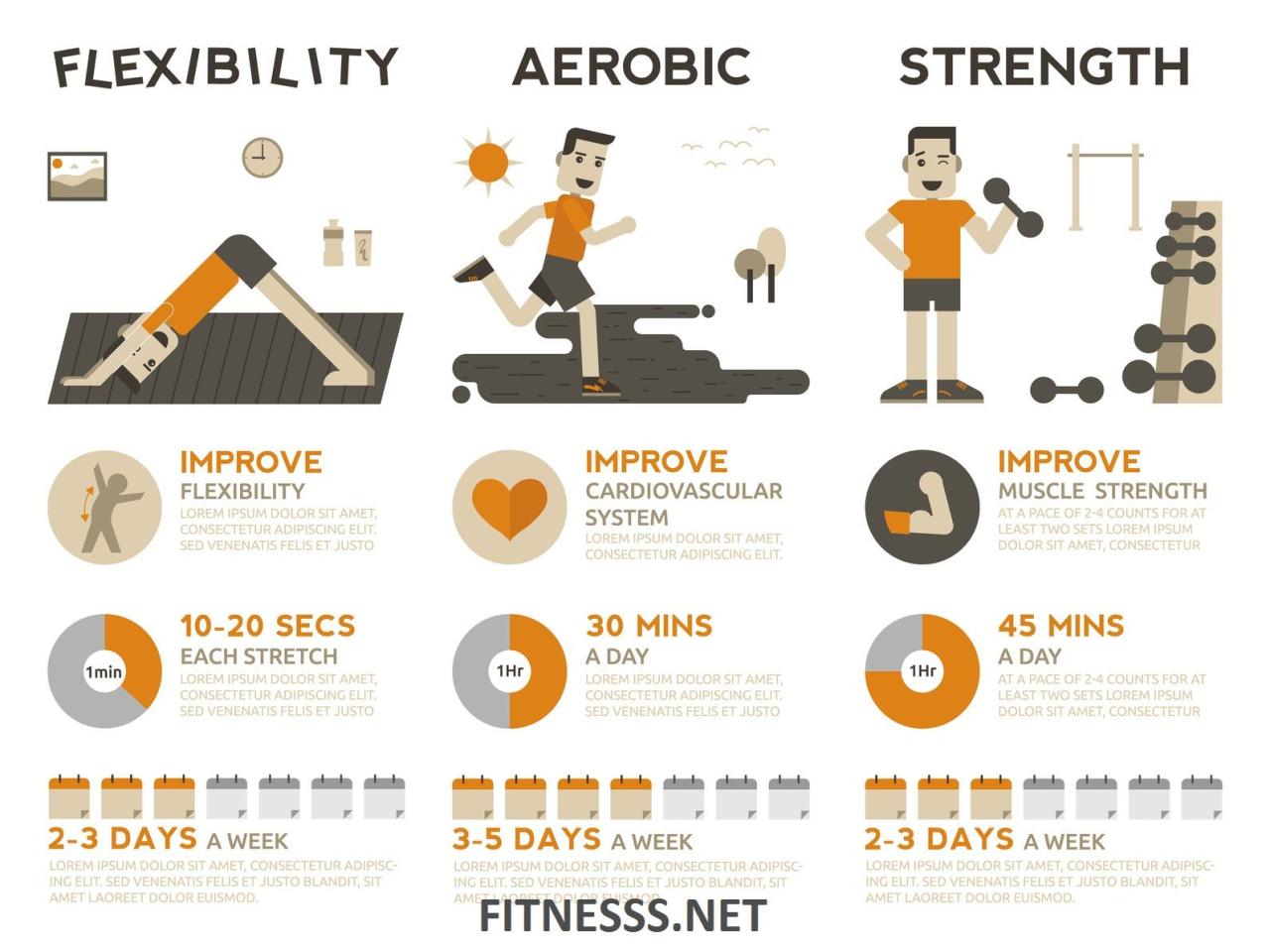
While cardio is a crucial component of fat loss, its effectiveness can vary greatly depending on several factors. Understanding these factors can help you optimize your workouts and maximize your results.
Intensity and Duration
The intensity and duration of your cardio sessions play a significant role in fat burning.
- High-Intensity Interval Training (HIIT):This involves alternating between short bursts of intense exercise and brief recovery periods. HIIT has been shown to be highly effective for fat loss, as it elevates your heart rate and boosts your metabolism for an extended period after your workout.
- Moderate-Intensity Steady-State Cardio:This involves exercising at a moderate pace for an extended duration. While less intense than HIIT, moderate-intensity cardio can still be effective for fat loss, especially when performed consistently.
The ideal combination of intensity and duration depends on your fitness level, goals, and time constraints.
Genetics and Individual Fitness Levels
Genetics and individual fitness levels influence how your body responds to cardio exercise.
- Genetics:Some individuals are genetically predisposed to burning fat more efficiently than others.
- Fitness Levels:Beginners may experience more rapid fat loss initially as their bodies adapt to exercise. However, as fitness levels increase, fat loss may plateau.
It’s essential to tailor your cardio program to your individual needs and adapt it as your fitness progresses.
Optimizing Cardio Workouts for Fat Loss
Here are some tips for optimizing your cardio workouts for fat loss:
- Vary Your Workouts:Incorporate different types of cardio, such as running, swimming, cycling, and dancing, to challenge your body and prevent plateaus.
- Focus on Intensity:Aim for workouts that elevate your heart rate and challenge you.
- Listen to Your Body:Don’t push yourself too hard, especially when starting out. Gradually increase the intensity and duration of your workouts as you become fitter.
- Stay Consistent:Regular cardio is key to achieving sustainable fat loss. Aim for at least 150 minutes of moderate-intensity cardio or 75 minutes of vigorous-intensity cardio per week.
- Combine Cardio with Strength Training:Strength training helps build muscle, which boosts your metabolism and helps you burn more calories at rest.
- Fuel Your Workouts:Eat a healthy diet rich in fruits, vegetables, and lean protein to support your cardio workouts and fuel your body for fat loss.
Cardio and Diet
Cardiovascular exercise, while crucial for fat loss, is only one piece of the puzzle. A balanced diet plays an equally vital role in achieving your weight loss goals. This section explores the symbiotic relationship between cardio and diet, providing insights into how to create a sustainable plan for successful fat loss.
Importance of Combining Cardio and Diet
Combining cardio with a balanced diet is essential for sustainable fat loss. While cardio burns calories, a healthy diet ensures your body receives the necessary nutrients for optimal function and energy expenditure. Without a balanced diet, your body may not have the fuel it needs for effective workouts, potentially hindering your progress.
Furthermore, a balanced diet helps control your overall calorie intake, contributing to a calorie deficit, which is essential for fat loss.
Creating a Sustainable Diet Plan, This is the best form of cardio for fat loss
A sustainable diet plan focuses on long-term habit changes rather than restrictive short-term solutions. Here are some tips for creating a sustainable diet plan that complements your cardio routine:
- Prioritize Whole Foods:Base your diet on whole, unprocessed foods like fruits, vegetables, lean protein, and whole grains. These foods are rich in nutrients and fiber, promoting satiety and helping you feel full longer.
- Control Portion Sizes:Even healthy foods can contribute to weight gain if consumed in excessive amounts. Be mindful of your portion sizes and use smaller plates or bowls to help control your intake.
- Hydrate Adequately:Drinking plenty of water throughout the day can help you feel full, reducing the likelihood of overeating. Water also aids in calorie expenditure and can help you feel more energized during your workouts.
- Cook More Meals at Home:Preparing meals at home allows you to control the ingredients and portion sizes. This gives you more control over your calorie intake and helps you avoid processed foods that are often high in calories and unhealthy fats.
- Plan Your Meals:Planning your meals in advance can help you make healthier choices and avoid impulsive snacking. Having a meal plan can also help you stay organized and prevent you from skipping meals.
Calorie Deficit and Macronutrient Balance
Weight loss occurs when you burn more calories than you consume, creating a calorie deficit. While cardio contributes to calorie expenditure, a balanced diet is crucial for controlling calorie intake. A healthy diet should also focus on macronutrient balance, which involves consuming the right proportions of protein, carbohydrates, and fats.
A calorie deficit is achieved when your energy expenditure (calories burned) exceeds your energy intake (calories consumed).
- Protein:Protein is essential for building and repairing muscle tissue, which is important for maintaining metabolic rate and increasing calorie expenditure. Aim for a protein intake of 0.8 grams per kilogram of body weight per day.
- Carbohydrates:Carbohydrates provide energy for your workouts. Choose complex carbohydrates like whole grains, fruits, and vegetables, which are digested more slowly and provide sustained energy. Avoid simple carbohydrates like sugary drinks and refined grains, which can lead to energy crashes and cravings.
- Fats:Healthy fats are important for hormone production and cell function. Choose unsaturated fats from sources like avocados, nuts, and olive oil. Limit saturated and trans fats, which can increase the risk of heart disease.
Cardio for Different Fitness Levels
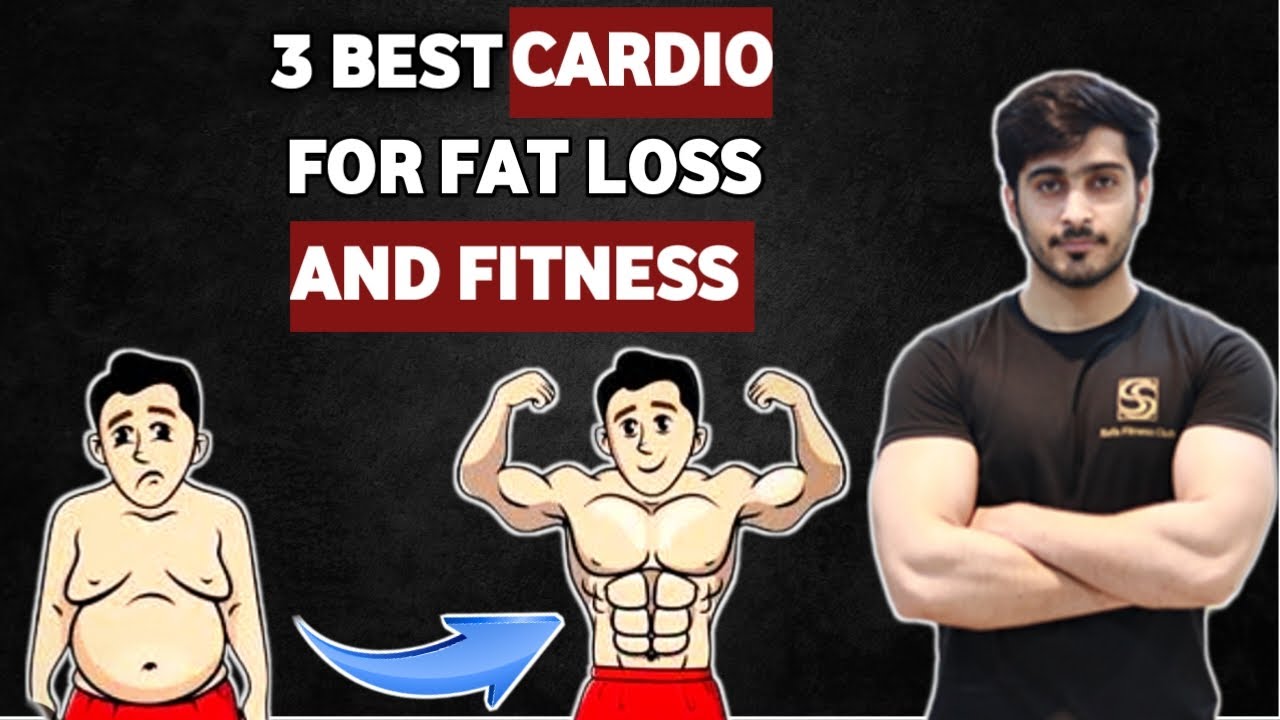
Cardiovascular exercise is a crucial component of a healthy lifestyle, offering numerous benefits such as weight management, improved heart health, and enhanced mood. However, finding the right cardio workout can be challenging, especially when considering different fitness levels. This section will explore various cardio exercises suitable for beginners, intermediate, and advanced exercisers, providing modifications to cater to individual fitness abilities.
Cardio Exercises for Different Fitness Levels
The following table Artikels cardio exercises suitable for different fitness levels, along with modifications to adjust the intensity and duration:| Fitness Level | Exercise | Description | Modifications ||—|—|—|—|| Beginner | Walking | Walking is a low-impact activity that can be easily modified to suit different fitness levels.
Start with short walks and gradually increase the duration and intensity. |
Begin with 10-15 minutes of walking at a moderate pace.
Gradually increase the duration and intensity as you feel more comfortable.
Let’s be real, the best form of cardio for fat loss is the kind you actually enjoy and stick with. For me, that often means fueling up with a delicious and satisfying breakfast like baked egg cups with garlic toast.
The protein and healthy fats keep me feeling full and energized, giving me the motivation to get out there and crush my workout!
You know what’s the best form of cardio for fat loss? Honestly, it’s the kind you actually enjoy and stick with! But keeping yourself hydrated is super important for any workout, and sometimes water just doesn’t cut it.
That’s where 7 water alternatives for hydration ranked comes in handy. From coconut water to herbal teas, there are plenty of delicious options to keep you going. So, find your favorite, stay hydrated, and keep those fat-burning workouts going!
Use inclines or hills to challenge yourself. || Beginner | Swimming | Swimming is an excellent low-impact exercise that provides a full-body workout. Start with shorter swims and gradually increase the distance and intensity. |
Begin with 20-30 minutes of swimming at a moderate pace.
Use different swimming strokes to engage different muscle groups.
Gradually increase the duration and intensity as you feel more comfortable. || Intermediate | Jogging | Jogging is a moderate-intensity exercise that provides a good cardiovascular workout. Start with shorter jogs and gradually increase the distance and intensity. |
Begin with 20-30 minutes of jogging at a moderate pace.
Gradually increase the duration and intensity as you feel more comfortable.
Incorporate intervals of faster running or hill sprints to challenge yourself. || Intermediate | Cycling | Cycling is a great way to get a cardiovascular workout while enjoying the outdoors. Start with shorter rides and gradually increase the distance and intensity.
|
Begin with 30-45 minutes of cycling at a moderate pace.
Gradually increase the duration and intensity as you feel more comfortable.
Use hills or inclines to challenge yourself. || Advanced | Running | Running is a high-intensity exercise that provides a challenging cardiovascular workout. Start with shorter runs and gradually increase the distance and intensity. |
Begin with 30-45 minutes of running at a moderate pace.
Gradually increase the duration and intensity as you feel more comfortable.
Incorporate intervals of faster running or hill sprints to challenge yourself. || Advanced | HIIT (High-Intensity Interval Training) | HIIT involves short bursts of intense exercise followed by periods of rest or low-intensity activity. This type of training is highly effective for fat loss and improving cardiovascular fitness.
|
Start with 2-3 HIIT workouts per week.
Let’s be real, hitting the gym is key for fat loss, but sometimes you need a little extra motivation. That’s where a delicious and healthy meal like this simple spaghetti squash lasagna comes in. It’s a guilt-free way to fuel your workouts and keep you on track with your fitness goals.
Remember, a balanced diet is just as important as exercise, so don’t neglect the delicious side of fat loss!
Gradually increase the intensity and duration of the workouts as you feel more comfortable.
Use a variety of exercises to challenge different muscle groups. | Proper Form and Technique:Walking:
- Keep your head up and shoulders relaxed.
- Maintain a natural arm swing, bending your elbows at a 90-degree angle.
- Land on your heel first, then roll through to your toes.
- Maintain a steady pace, avoiding sudden stops or starts.
Swimming:
- Keep your body streamlined, with your head in line with your spine.
- Use a rhythmic arm stroke, pulling water from your hips to your shoulders.
- Kick from your hips, keeping your legs straight and feet pointed.
- Breathe regularly, turning your head to the side to take in air.
Jogging:
- Keep your head up and shoulders relaxed.
- Maintain a natural arm swing, bending your elbows at a 90-degree angle.
- Land on your midfoot, then roll through to your toes.
- Avoid overstriding or landing on your heels.
Cycling:
- Sit upright, with your back straight and shoulders relaxed.
- Grip the handlebars lightly, with your elbows slightly bent.
- Pedal smoothly, using your legs to generate power.
- Look ahead, keeping your eyes on the road or trail.
Running:
- Keep your head up and shoulders relaxed.
- Maintain a natural arm swing, bending your elbows at a 90-degree angle.
- Land on your midfoot, then roll through to your toes.
- Avoid overstriding or landing on your heels.
HIIT:
- Use proper form for each exercise, focusing on controlled movements.
- Maintain a high intensity during the work intervals.
- Take adequate rest during the recovery periods.
Remember to listen to your body and adjust the intensity and duration of your workouts as needed. It’s important to gradually increase the challenge to avoid injury and ensure sustainable progress.
Cardio and Motivation: This Is The Best Form Of Cardio For Fat Loss
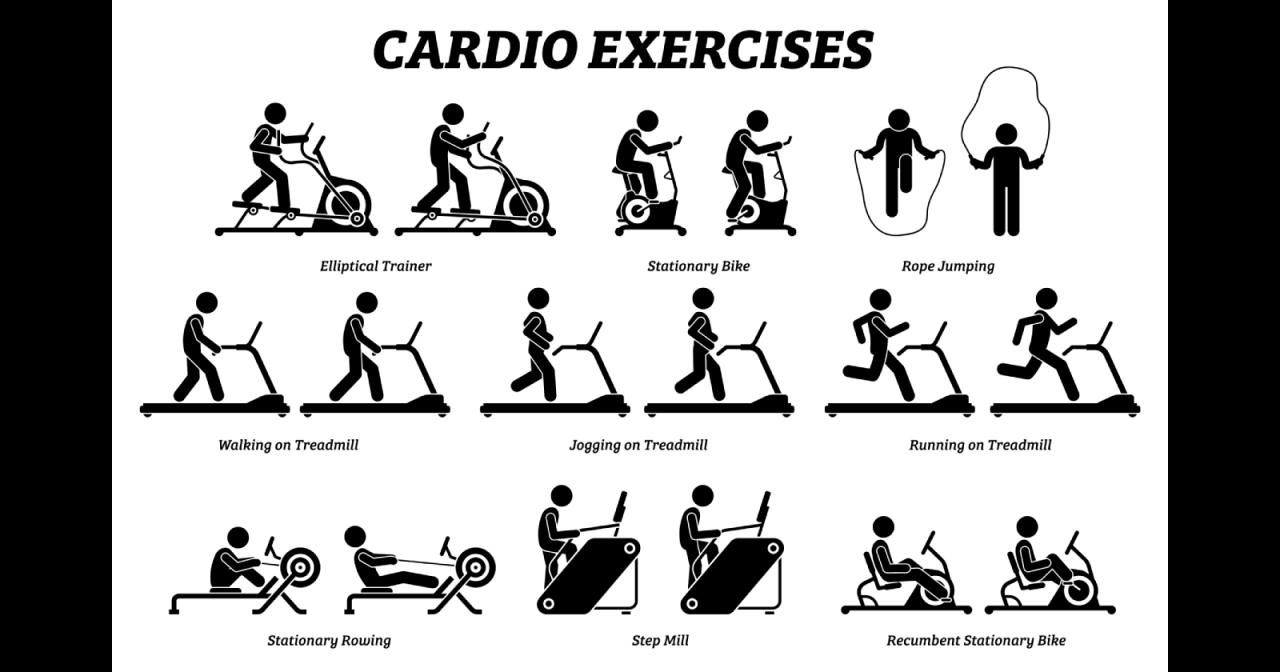
Staying motivated with cardio workouts can be challenging, especially when you’re starting a new fitness routine or facing plateaus. Consistency is key for achieving your fitness goals, and finding ways to stay motivated can make all the difference. This section will explore effective strategies for maintaining motivation and consistency with your cardio workouts.
Setting Realistic Goals and Tracking Progress
Setting realistic goals is crucial for staying motivated. When you set achievable goals, you’re more likely to see results and feel encouraged to continue. Here’s how to set realistic goals and track your progress:
- Start small: Don’t try to do too much too soon. Begin with short, manageable workouts and gradually increase the duration and intensity as you get fitter.
- Focus on consistency: Aim for regular workouts rather than intense, infrequent sessions. Consistency is more important than intensity for long-term results.
- Track your progress: Use a fitness tracker, journal, or app to monitor your workouts and progress. This helps you see how far you’ve come and motivates you to keep going.
Motivational Tools and Techniques
There are numerous tools and techniques that can help you stay motivated with your cardio workouts:
- Find a workout buddy: Working out with a friend can provide accountability and motivation. You can encourage each other and make the workouts more enjoyable.
- Listen to music or podcasts: Music and podcasts can help you stay entertained and distract you from the effort of your workout.
- Reward yourself: Set small rewards for reaching milestones or completing your workouts. These rewards can be anything from a new workout outfit to a relaxing massage.
- Join a fitness class: Group fitness classes can provide structure, support, and a sense of community, making it more likely that you’ll stick with your workouts.
Strategies for Maintaining Motivation
Here are some strategies for staying motivated and consistent with your cardio workouts:
- Vary your workouts: Avoid boredom by incorporating different types of cardio activities into your routine. This could include running, swimming, cycling, dancing, or hiking.
- Find activities you enjoy: Choose activities that you find enjoyable and engaging. If you don’t enjoy your workouts, you’re less likely to stick with them.
- Set specific goals: Instead of general goals like “lose weight,” set specific goals like “run a 5K” or “swim for 30 minutes three times a week.” This gives you something concrete to strive for.
- Don’t be afraid to take breaks: If you’re feeling burnt out, take a short break from your workouts. This can help you come back refreshed and motivated.
End of Discussion
So, ditch the boring cardio routines and embrace the power of HIIT. It’s the ultimate fat-burning weapon, and it’s more fun than you might think. With the right plan and a little dedication, you’ll be well on your way to achieving your fitness goals and feeling your best.

